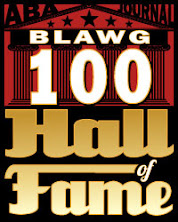Tushnet v. U.S. Immig. & Customs Enforcement, No.
1:15-cv-00907 (D.D.C. filed Mar. 31, 2017)
Thanks to my able counsel Michael Kirkpatrick of Public
Citizen, initially assisted by Georgetown students from the Institute for
Public Representation. Here, the
district court denies ICE’s motion for summary judgment in my FOIA suit,
ordering ICE to do further searches/explain why it can’t and to review its
redaction of certain elements of industry guides to detecting counterfeits
supplied to ICE.
I particularly appreciated the court’s wry summary of how
this dispute began, including “Tushnet explained to ICE that an irreverent
parody of a recognized trademark does not infringe because it creates no confusion
over the item’s provenance.” A bit more:
As reported in the Boston Globe,
ICE spokesman Daniel Modricker announced that any item that “debas[es] a
mascot—and really anything that denigrates a team—is guaranteed to be
contraband.” Nestor Ramos, U.S. Agents Tackle Fake Super Bowl Items, Boston
Globe, Jan. 31, 2015).… After reading the article, Professor Tushnet
immediately wrote to Modricker seeking clarification of ICE’s position on
parody merchandise. Modricker doubled down in his reply: “if one logo
[disparages] another logo than it would be infringement.”
When pressed further on ICE’s legal
basis for seizing parody items, Modricker looped in attorney Joseph Liberta,
Chief of the agency’s Criminal Law section. … Liberta attempted to assuage
Tushnet’s concerns by noting that ICE, in consultation with agency and
Department of Justice attorneys, relies on “potential fair use provisions and
federal circuit-specific case law” when determining whether probable cause
supports a seizure. He invited Tushnet to submit a FOIA request to obtain more
information about the number of counterfeit seizures ICE had made in recent
history. Two weeks later, Tushnet took
him up on his offer ….
How do ICE agents determine what to seize? The court
explained:
As noted above, the only material
that ICE produced in response to Tushnet’s request for training or guidance
documents given to ICE agents were 25 instructional guides provided to ICE by
various sports leagues and sports apparel companies. Tushnet finds it is “implausible that ICE has
no documents of its own” that instruct officers on how to distinguish
counterfeit marks. The Court does not
share Tushnet’s skepticism on this score. It seems entirely logical that ICE
would rely on apparel licensers and manufacturers to point out the unique
features of their branded clothing, rather than to expend the resources
necessary to develop those guidelines internally.
But that fact makes it quite important that such guides be
legally accurate, rather than overclaiming trademark owners’ rights. It also suggests that Mr. Liberta's initial claims to me about relying on fair use and federal circuit-specific case law were, let's say, unfounded, which is really too bad.
I also partially prevailed on my challenge to the adequacy
of ICE’s search, given the disparity in search terms used by field offices,
some of which didn’t even use the terms I specifically identified in my
request, such as “dilution.”
FOIA Exemption 7(E) authorizes agencies to withhold “records
or information compiled for law enforcement purposes [that] would disclose
techniques and procedures for law enforcement investigations or prosecutions,
or would disclose guidelines for law enforcement investigations or prosecutions
if such disclosure could reasonably be expected to risk circumvention of the
law.” This creates a relatively low bar
for agencies, who must only show logically how releasing information would create
a risk of circumvention. On the basis of
this exemption, ICE redacted over 300 of the 521 pages of the industry guides
it released.
The court reasoned: “[o]n its face, ICE’s justification
appears sound: If ICE agents use these guides
to distinguish counterfeit goods, revealing the features they look for could
help black market manufacturers improve the ‘authenticity’ of their products
and potentially avoid detection. This explanation provides a straightforward
link between disclosure and potential violations of the law.” Though the court
rejected several of my objections, however, it agreed that “there is no
legitimate law enforcement purpose in detecting non-counterfeit goods”:
[Tushnet] maintains that some of
the material redacted from industry guides might incorrectly characterize
clothing as counterfeit when in fact it is a lawful parody. Withholding such
material would therefore serve no “legitimate law enforcement purpose” because
ICE has no legal authority to seize these items. Tushnet points to a “No Flyers
Zone” t-shirt that features the Philadelphia Flyers logo with the Chicago
Blackhawks logo imposed over it as one example of an item that was mislabeled
as counterfeit in one NHL product guide. The use of the Flyers logo is lawful,
according to Tushnet, “because there is no confusion as to whether the Flyers
sponsored the shirt.” In addition,
Tushnet presents evidence that ICE has seized other items in this same vein,
which suggests a potential misunderstanding within the agency as to what
constitutes trademark infringement. The examples offered by Tushnet give the
Court pause because 7(E) redactions would be inappropriate if there is no risk
that a law could be violated, and successful parodies do not violate trademark
laws…. Given the evidence Tushnet has produced and the agency’s apparently
exclusive reliance on industry guidance to discern trademark infringement, the Court
finds that ICE has not sufficiently justified its 7(E) redactions and that a
material factual dispute remains regarding the applicability of this exemption.






















